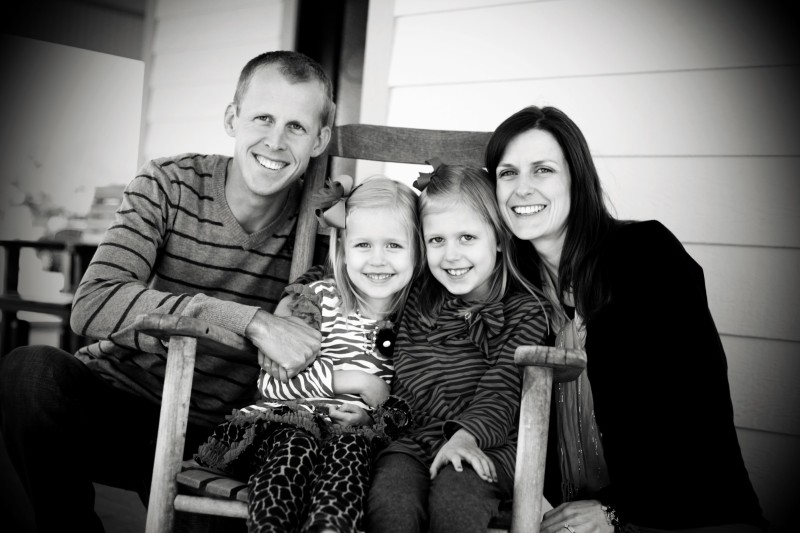
“I believe absolutely that it is in sharing the most vulnerable aspects of our journeys that we support each other to find grace and strength and healing during equally challenging times.”
~ Baden Lashkov
Living a Resilient Autoimmune Life
Recently Kimberly, a reader on my Facebook page said this:
“I think the frustrating part for me is hearing the stories of what people say helped them heal, without hearing the whole story behind how many things they tried that didn’t work, and how many trial and errors it took. At first I really believed it was a difficult but straightforward process, but it’s actually almost always a journey with dead ends, wasted money, tears, and frustration. I think it’s important that more people know they are not failing when they fail the first or even the 10th time.”
I agree with Kimberly, which is why I ask so many questions in the success story interviews I share on this blog. It’s also why I interview people who have reached remission, but also those who haven’t. There are lots of points to celebrate along the path to healing. Perfection isn’t the only definition of success.
Today I’d like to introduce you to a strong, persistent, wise and beautiful woman, Christie Stallings. She has psoriasis, an autoimmune disease that causes skin cells to grow too quickly. New cells form in days rather than weeks, but the body doesn’t shed them at the same pace, so they pile up in red, scaly patches. In a society so focused on appearance, these symptoms can evoke feelings of shame, vulnerability and a frustrating lack of control. Christie speaks with honesty about how incredibly grateful she is for the many ways her health has improved through the paleo diet and lifestyle, but also the grief she feels when a setback occurs. She hasn’t achieved remission, but she also hasn’t given up hope.
What were your first symptoms? When did you learn what it was?
My first symptom was an itchy, flaky spot on the base of my neck when I was pregnant with my second child. I had it for a few months before going to the doctor, and she diagnosed it as seborrheic dermatitis. Two weeks after the birth, I suddenly had these itchy flaky spots all over my scalp, and I was absolutely miserable. I tried every over-the-counter and prescription shampoo I could find, and I kept getting worse. A year later, my torso was covered in spots. I then went to a dermatologist and was diagnosed with psoriasis.
What treatment methods did you try first?
The dermatologist prescribed a foam steroid to me, and my husband helped me apply it twice a day to my scalp and back. It was stinky, it burned, and my head was a big ball of flakes. I knew I had to find a way to heal my body.
Can you describe what it was like for you, when your condition was at its worst?
In addition to the psoriasis, I had chronic fatigue, migraines, and I also struggled with severe anxiety and depression. I was taking Zoloft and Xanax several times a day just to survive. I couldn’t take my kids to the park or the grocery store for fear of another panic attack. I even had panic attacks every Sunday during church! I didn’t want to be alone in my own house with my children, because I was scared of what my body was going to do next. I was going to the doctor every week looking for answers. I was seeing a psychiatrist trying to figure out why I was so anxious and depressed. I had two beautiful children and the perfect husband, but I was miserable. In the summer of 2009, I ended up in the emergency room thinking I was having a heart attack.
Which healing diet(s) did you choose and how fast did you see results?
When I started researching psoriasis, I kept seeing over and over that there was no known cause and no known cure. I kept looking for information, believing that my body was trying to warn me that something was wrong, and I wanted to figure it out. I finally stumbled onto an article that said to stop eating gluten and dairy. I had always fed my family “healthy” or what I believed was healthy. We had our healthy dose of grains and our antibiotic filled milk several times per day, one green vegetable with each meal (usually canned green beans) and we stayed far away from high fructose corn syrup and partially hydrogenated oils. After reading about the gluten and dairy, I headed off to our nearest health food store and loaded up on vanilla soy milk, gluten free breads, pastas, crackers, etc. I thought this was the answer to my problems!
I guess it was in 2012 that I stumbled onto the Paleo diet through a mommy Facebook group and started to slowly realize where my downfalls were as far as our diet was concerned. I went through the period I think a lot of people go through, where I was “paleoizing” the Standard American Diet. We still had pancakes, pizza, brownies, etc. and had them quite frequently. I was just using alternative flours that were “grain free”. Little by little we made changes as we educated ourselves more and more.
In January of 2013 I stumbled upon The Paleo Mom‘s website and learned about the autoimmune protocol (AIP). When I first started looking into it, I was scared and overwhelmed. I had all the initial feelings of “What in the world am I going to eat?!? Me eating liver?!? No way!” But I decided and gained the support of my family to start the AIP on February 15th, 2013. Again, it has been a progress of slow changes. In the beginning, I was still determined to find a way to have my sweets, and that’s okay if done correctly, but I was having them several times per day. I slowly changed my diet to include less of the “AIP sweets” and more of the vegetables, liver, chicken broth, etc. Each small change brought on a huge change in my health, both physically and mentally.
How fast did I see results? My psoriasis made small improvements when I went gluten free and another small improvement going paleo. But it wasn’t until I went AIP that I saw more dramatic results. Not only in my psoriasis but my general well being.
What symptoms still remain?
In May of 2013, I suddenly had new spots on my face. I went to an Applied Kinesiologist and he found that I had toxic levels of Vitamin D. Very unusual in our culture, but I had been taking 5,000-10,000 IU of Vitamin D every day for over 3 years at that point, on the advice of my current doctor. Once I stopped taking it, my face cleared up within a week. The AK also found that I had an overgrowth of candida in my gut, as well as a parasite. I found that once those issues were corrected, my healing started in at a fast pace again.
I’ve felt close to remission many times in the past year. I have very little psoriasis left on my scalp or torso. Why I get so close and then have a step backwards, I have no idea. I wish I knew. I wish I understood everything my body is trying to tell me. In October of 2013, I woke up with new spots all over my arms. This was devastating to me. My psoriasis had always been in areas that I could hide. I could hide the spots on my scalp with my hair and the spots on my torso with clothes. How was I going to hide the spots on my arms?!? Well, I did hide them all winter wearing long sleeves, but the weather has been in the 70’s the past 2 weeks, and I can’t hide anymore. When these types of things happen and there seems to be no answers, it’s so easy to get discouraged and even depressed. But when I get to that mental place, I remind myself of how far I’ve come. The truth is I don’t think these spots are psoriasis. They don’t hurt, itch, anything. I forget I have them until I look in the mirror or wear short sleeves, and that’s a big improvement from where I started.
What other areas of your health improved simultaneously?
I can’t remember the last time I had a panic attack. I can’t even remember the last time I really worried about something. I don’t experience fatigue anymore. I don’t experience weakness or body aches or acne anymore. I no longer suffer from migraines. I don’t experience spikes and crashes with my blood sugar levels. My heart palpitations are very rare now. I don’t have stomach cramps anymore. I have energy, and I feel joyful and happy with my life, even when I face a setback. I wouldn’t trade how I feel now for anything.
What other things do you do outside of diet to support your health and healing?
I’ve stayed up late my whole life, and I’ve always been a pretty wired and stressed person. But after starting the AIP and reading The Paleo Mom’s blog and book, I realized how important sleep and stress management are. Instead of going to bed at 2am, I now go to bed at 10pm. It was a slow progress to break that bad habit. Once in a while I’ll think to myself, ‘I’ll stay up just this one night and get some things done that I’m behind on.’ And I pay for it the next day: I’m tired, I don’t feel good, I don’t feel happy or have mental clarity much less any energy, and I tend to eat foods I shouldn’t eat. It seems silly to stay up an extra 4 hours to get things done, only to turn around and have a 12 hour day where absolutely nothing gets done. As for managing stress, instead of trying to get everything done every day, I prioritize and pick one thing that needs to be done. The other stuff can wait. Those small changes made a huge difference. I also make sure I play with my kids, make time for my marriage, exercise, get plenty of sunshine, and enjoy my life instead of focusing on the daily hassles.
Lastly, I made some big changes in the products my family uses, right down to the chapstick we use and the fingernail polish I put on my children. EWG’s Skin Deep was a huge help in realizing how harmful our old products were, and helping me find healthy replacements.
Are you on any over the counter or prescription medication now? If yes, how does it compare to what you were taking pre-diet?
Before I started the AIP diet, I was taking Zoloft, Xanax, bio-identical progesterone, a “natural” Xanax, an adrenal supplement, and topical steroids. I don’t take anything now.
How about supplements?
I’m not on any supplements at the moment. I prefer to get everything I need from my diet, if I can. I make sure that I eat plenty of grass-fed beef for my omega balance. I eat liver every day as well as chicken broth, raw garlic, and gelatin. And of course as many vegetables as I can fit in a day. However, since I’ve had a healing setback, I’ve decided to add the following supplements back into my diet: magnesium, fish oil, and l-glutamine. They have helped me in the past.
What foods have you been able to successfully reintroduce, and how long did you wait before doing reintroductions?
I did try to reintroduce organic dairy last fall and that didn’t go well! Other than that, I haven’t really reintroduced any foods. I’m happy with my diet, I feel good, and I don’t really have a desire to reintroduce anything at this point.
How strict were/are you on the dietary protocol? Any “cheats”?
I’ve always been pretty strict on the AIP. I’m an “All or Nothing” type of person so if I commit to doing something, I do it all the way. My only indulgence is a Virgil’s Cream Soda once a month, and that doesn’t seem to bother me. Other than that, I’ll eat some organic dried apple if I’m craving something crunchy and sweet.
What were/are the challenges for you in sticking to the diet?
In the beginning, I missed the nuts and peppers and tomatoes. I wanted chocolate every day. And I did cheat several times at least with chocolate in the beginning. Luckily I ate enough chocolate that I felt sick, and I haven’t eaten any since then! The real challenge is eating at restaurants or at pot lucks. I steer clear of restaurants and if we travel, I make all my own food and load it up in a cooler. I take my own food to pot lucks as well.
Who supports you in your healing journey?
Pretty much my husband and children and mom, and one friend in particular that eats like we do. My sister goes out of her way to get organic eggs, organic salad and spinach, etc. when she has us over for dinner. And she’s very careful about what she feeds our children when they stay with her. Unfortunately, some other people think I’m stuck up, and some make fun of the food we eat because it’s “weird” which just blows my mind that meat, veggies, and fruits are weird! Others think we’re boring because we won’t eat out with them every week. And needless to say, we don’t get invited over to friend’s houses for dinner anymore. I think it’s overwhelming and confusing for them to figure out what to feed us, and I understand that. We try to invite people over to our house more now so we can still enjoy those times with friends.
What advice would you give to people with autoimmune disease who are just starting to consider diet and lifestyle changes?
Is it hard at first? Yes, but it is so worth it. You just have to hit a point that you want to feel good every day and stop being miserable. Once you educate yourself about the foods you’re eating and realize what they are doing to your body, it’s a easier to stop eating those foods. I also want to be a good example to my children. I want them to have the healthy start that I didn’t have. I want to keep them from dealing with autoimmune issues like I’ve dealt with.
Commit to yourself that you will try the diet for 6 weeks. Be strict and be “all in.” After that 6 weeks, your cravings will be gone and you’ll feel so much better, that you’ll want to keep going. I believe this quote: “The good news: only you are in charge of your destiny. The bad news: only you are in charge of your destiny.” ~ Karen Salmansohn
Update 3/20/14
The week after she did this interview, Christie went to her dermatologist and confirmed the spots on her arms were indeed psoriasis. That’s when Christie remembered she had reintroduced dairy just a few weeks before those spots appeared. She was enjoying the yogurt and ice cream so much, she continued to eat multiple bowls a day for 4 weeks before stopping. This is a great example of our capacity for denial, and I don’t say that judgmentally. It’s very human, and we’ve all been there! It’s hard to accept food intolerance sometimes, both when it’s happening, and making the connection after the fact. Autoimmune skin conditions often heal quite slowly, which is why Christie still has the spots on her arms, although they are starting to fade. If you have a setback in your healing, look closely at your diet and lifestyle. Can you find the reason? Sometimes it’s right there; we just don’t want to see it. But I also want to acknowledge that sometimes, it’s not that simple. There are so many root causes to autoimmune disease. Christie also plans to work with a functional medicine practitioner to see if she can speed her healing.
Other Healing Stories
This is part of a series of autoimmune success stories. Click here to see the full list. They are also a regular feature of my podcast: Phoenix Helix.

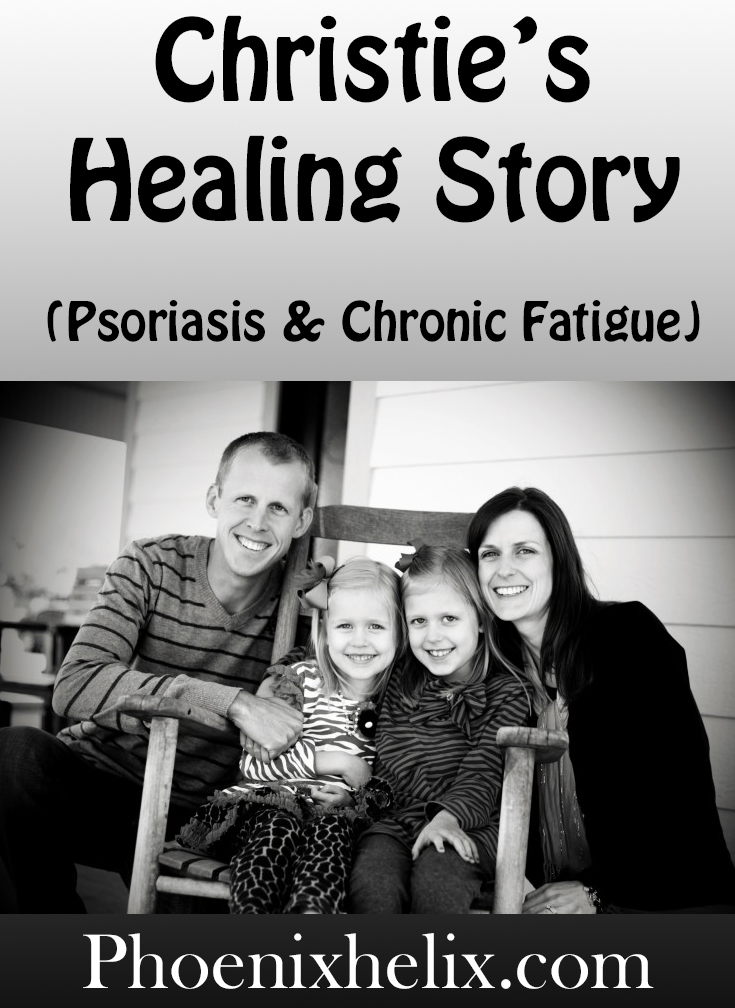
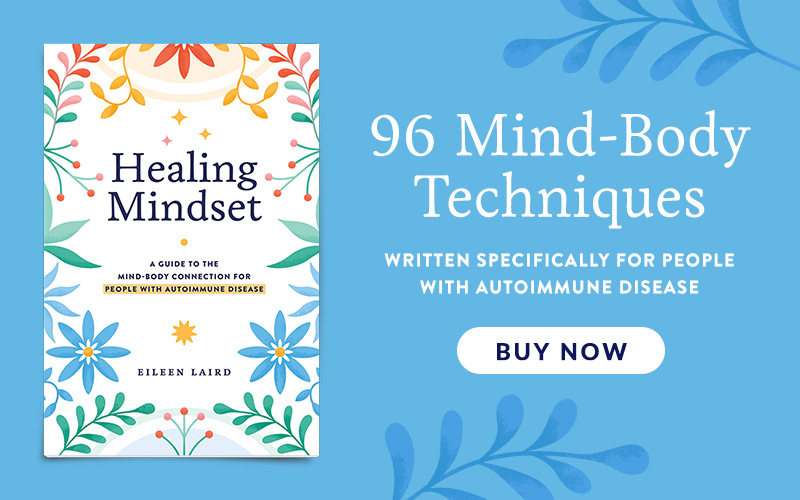
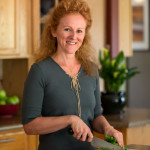

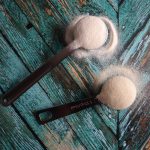
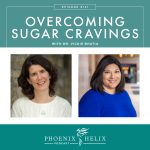
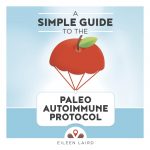
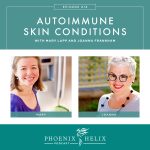
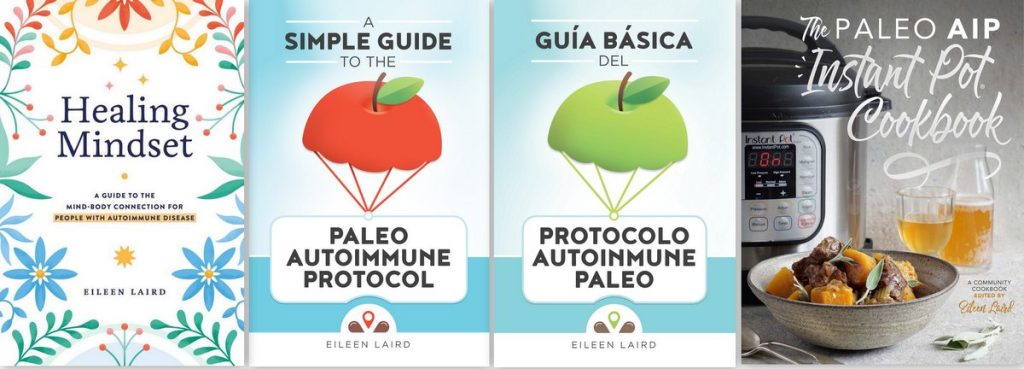
Thank you Eileen, I know this interview was a few years ago but I am going through what Christrie has. My scalp Psoriasis started in 2001 and just now learning that it is an autoimmune and I can do something about it. I have started my own blog trying to help others learn more about what Autoimmune it. Bless you for your work.
Hi Staci. Thanks so much for writing, and welcome to the blogging community! Wishing you healing at every level.
Thanks for sharing your story. I have psoriatic arthritis and am currently looking at healing diets to help my disease. I’ve noticed more anxiety and depression lately too so hoping eating better will decrease those as well.
Thanks for saying hello Jessie. Wishing you wellness in the new year!
Hi Jessie,
I can relate with psoriatic arthritis and anxiety, and the treatment suggested for me (steroid injections) made it even more challenging (no longer doing those). Diet seems to really help, hope we can stay in touch.
Here’s a great article comparing 4 people’s AIP healing stories with psoriasis, including a powerful before and after photo: http://www.comfortbites.co.uk/2015/11/healing-psoriasis-using-aip-bloggers.html
Wow, thank you so much for including Christie’s interview and all this information about psoriasis on your site. So glad to see it named as an autoimmune condition, and I really appreciate that you include someone who “hasn’t achieved remission, but also hasn’t given up hope.” This is me.
And thanks for all the helpful responses too, for the 23 and me information from Karen, which was also helpful in my case to course correct some specific issues in my case related to B12 and D, and for the olive oil suggestion from JP. This is how we heal, by sharing our stories and being bold enough to follow our own paths, even if it means social consequences like Christie mentions (which on top of having a visible skin condition and sometimes joint issues can make it incredibly challenging at times). I am so thankful there are others out there like you, it gives me hope and inspiration.
I was 70% covered in psoriasis after a case of strep throat (I had psoriasis without remission for 16 yrs prior but not to that extent) and healed strictly following a diet directly geared to healing it. It only took 5-6 months. It is very much like the AIP diet but it is very focused and specific to healing psoriasis and eczema. Where AIP is geared to autoimmune diseases in general this book will tweek your diet and protocol specifically for your psoriasis. It’s “Healing Psoriasis Naturally” by Dr. Pagano Many case studies, recipes and natural topical things from your own kitchen to help you along the way. Just a note… be prepared and embrace the healing process. Psoriasis definitely requires a detox reaction period because of the nature of the condition.
Thanks for sharing your experience and advice, Deb!
Here’s another inspiring psoriasis success story: http://comfortbites.blogspot.co.uk/2014/07/healing-psoriasis-naturally.html
Hi there! I also have psoriasis, and I just wanted to share that the best topical treatment for it is olive oil! I have had it my whole life and have tried EVERYTHING, and this works the best. The patches used to be all over my body, and now I get it mostly on my scalp, lips, eyelids, and inside my ears, but olive oil takes care of it all! It is not a cure, but it clears up the itchy patches very quickly.
I have an update to Christie’s Story. I added it to the bottom of the interview. Hint: she knows the cause of the psoriasis outbreak on her arms.
Thanks for sharing with Healing with Food Friday! We LOVE to see such incredible success stories!!
Thank you everyone for your wonderful comments, and thank you Christie, for sharing your story!
You are very welcome. I have enjoyed talking with you Eileen. 🙂
Thanks so much for sharing this story! How was Christie/the Applied Kinesiologist able to detect the parasite in her gut and how was she able to rid herself of it and the candida?
I am experiencing the same thing and my doctor tested me (blood test, urinalysis, saliva swab) and recommended that I do the GAPS diet to heal my gut and candida.
Karen, I don’t know that I’m qualified to explain how an Applied Kinesiologist actually make a diagnosis. It’s beyond my understanding, but it’s proven to be very effective. I took a supplement to get rid of the parasite. It’s basically the leaves of the noni plant ground up and in a capsule. I only had to take it for 2 weeks and when I was retested it was gone. My bloodwork had also shown a parasite 2 years previously, but my doctor gave me the “Oh, we’ll just watch it.”
I had read about parasites and did the herbs that take it out. I feel much better and started losing weight and now have plenty of energy.
I had psoriasis’s for years after a very stressful divorce. After changing my diet several times because of food allergies, gluten intolerance, body pain, depression, just overall anxiety ridden..they have disappeared. But, if I use a regular shampoo or conditioner the sores will come back and just get worse if I continue to use.
Thanks Christie! Did you do anything specific to get rid of the candida? My husband thinks he has a candida problem. Like me, he has been paleo (plus a bit of dairy) for about a year.
Karen, the supplement I took for the parasite was the same one I took for the candida, the noni plant. This is what I took: http://supremenutritionproducts.com/MorindaSupreme/index.html
Also, the neem supplement from the same company is supposed to be very effective against parasites although it wasn’t needed in my situation. I hope that helps.
Thank you! This is helpful. Such a pain when our health care system is such that we need to search out the solutions to our health.
Love her inspirational story. Thanks for sharing. It may help her to have a DNA test done through 23 and Me and then run it through Sterling Hill to identify what methylation cycle pathway variants she may have. For me (Chronic Lyme), it was immeasurably helpful because my doctor was able to determine which nutrients I was not able to absorb because of the DNA variants. Once we changed those out for some my body could absorb it was like a light switch went off. I’m not affiliated with 23 and Me, just thought I’d share. It was well worth it for me to get that added boost from the information in the test raw material (the print out was of limited use). I hope she is soon able to say she is in remission. Keep on keepin’ on. Life is one big science experiment and we are our own laboratories.
Great story. I will be looking for this Friday on the HWF link up. I love healing diet stories.
Thanks so much for sharing Christie’s story. It really encourages me as I struggle with similar issues–anxiety/depression, eczema that started 2 years ago, etc. I am on zoloft and hope to get off, but have only been doing the AIP for under 2 months. It’s true that it’s encouraging to read other’s stories and not just here the “after” version when all is swept clean and appears easy. Eileen, I really appreciate your blog and your honesty about the journey. It helps us to come away with hope! 🙂
Christie, I think we are twin souls, right down to our names! 😉 We suffer from different diseases, but so much of your story resonates with me, especially the ongoing setbacks but overall improvement. Thank you so much for sharing your story, and thank you Eileen for this series. The stories are always so encouraging!
I have rheumatoid arthritis (for 30 years) and I am currently looking into healing diets. I have always thought that alkalising the body was the way to go and now I’m wondering how paleo fits in with that? I’m so confused!
Hi Michele. The alakalizing diet is actually a myth. Here’s a good series of articles about the science of how our bodies work: part 1 & part 2. In my experience, you need deep nutrition to heal. Autoimmune disease is a breaking down of the body on a cellular level, and high quality meat, seafood, fats and vegetables are the fastest way to rebuild your health. Here’s an article I wrote that talks more about this style of diet. It definitely worked for me (and I have RA).
Hi Eileen,
I found your website a while ago, and as I go through my illness and healing journey I learn more and more as I go.
This mention of alkalinity is timely for me. I have so many questions, but will read your mentioned articles first as they may just provide the clarity I need.
But just one question please… I have gut issues and one of the symptoms is a hiatal hernia and it’s painful symptoms. Is hiatal hernia discussed anywhere on your site or can you refer me somewhere?
Many thanks 🙂
Trish
Hi Trish. I recommend a doctor consult for a hiatal hernia, especially if there’s pain.
Thank you for sharing your story and reconfirming how powerful correct nutrition can be. I am horrified by the amount of prescription drugs taken in our society. I have no problem maintaining my diet at home, but it is VERY difficult when dining out. I wish there were more Paleo options at restaurants.
Such an inspiration reading all of these life experiences. I have rheumatoid arthritis and after many failed medications am so ready to take my life back. Thank you for all of this information!